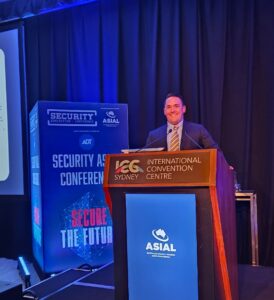Duane Morris Takeaway: This week’s episode of the Class Action Weekly Wire features Duane Morris partner Jennifer Riley and associates Greg Tsonis and Derek Franklin with their analysis of a Wisconsin federal court decision weighing in on the two-step process for issuing notice of a Fair Labor Standards Act (“FLSA”) collective action, illustrating a gaining momentum among district courts toward rejecting a two-step “conditional certification” approach in favor of a one-step standard.
Check out today’s episode and subscribe to our show from your preferred podcast platform: Spotify, Amazon Music, Apple Podcasts, Samsung Podcasts, Podcast Index, Tune In, Listen Notes, iHeartRadio, Deezer, and YouTube.
Episode Transcript
Jennifer Riley: Thank you for being here again, for the next episode of our weekly podcast, the Class Action Weekly Wire. I’m Jennifer Riley and with me today are Greg Tsonis and Derek Franklin. Thank you for being on the podcast today guys.
Derek Franklin: Great to be here, thanks for having me.
Greg Tsonis: Yes, thanks Jen, I’m happy to be here.
Jennifer: Today we are discussing a recent ruling coming from the U.S. District Court for the Eastern District of Wisconsin, Laverenz v. Pioneer Metal Finishing. Greg, can you tell us a little about the background of this case?
Greg: Sure, so in this case the plaintiff Amanda Laverenz filed a class and collective action lawsuit under the FLSA and Wisconsin state law alleging that Pioneer deprived her and other similarly situated hourly employees of wages through its practice of rounding employees’ time clock entries to the nearest quarter hour and paying employees based on that rounded time. Now the plaintiff moved for conditional certification of a collective action, and argued that the court should employ a lenient two-step certification process established in 1987 by a Third Circuit district court in Lusardi v. Xerox Corp. Under the Lusardi framework, named plaintiffs need only present what courts have described as a “modest factual showing” that similar potential plaintiffs exist to satisfy the first step of conditional certification. In the second step, assuming others have joined the lawsuit as opt-in plaintiffs and the parties have completed discovery on the merits, the court would then make a final determination whether the opt-in plaintiffs actually qualify as parties to the litigation on the basis of substantial similarity to the named plaintiffs in what is known as a second-stage final certification order. Now here, Pioneer responded that the Court should follow the Fifth Circuit’s 2021 decision in Swales v. KLLM Transport Services, LLC, which rejected the longstanding approach developed in Lusardi. Pioneer argued that the two-step approach “is inconsistent with the FLSA’s purpose and Seventh Circuit case law stressing the similarities of FLSA certification to Rule 23 certification, which requires ‘rigorous’ scrutiny.”
Jennifer: Yes, the Swales ruling changed the conditional certification analysis significantly. The Fifth Circuit in that case recognized that nothing in the text of the FLSA even mentions “conditional certification.” The Swales court directed that courts should consider all available evidence to determine if analyzing the merits of pending claims required a “highly individualized inquiry” into each opt-in’s circumstances and, if so, to declare a certification inappropriate. Derek, which standard did the court in the Laverenz action ultimately use?
Derek: Well, Jen, the court chose to go with Pioneer’s requested standard. The court adopted the Fifth Circuit’s FLSA collective certification approach in Swales and denied Plaintiff’s motion for conditional certification. The court actually cited in its ruling a 2022 Annual Class Action Report our colleague and Duane Morris partner Gerald L. Maatman, Jr. served as General Editor. In its ruling, the court noted that federal courts in 2021 granted FLSA conditional certification motions in 81% of rulings on such motions during the first stage of the two-step process despite – in that same year – granting 53% of FLSA decertification motions at the next stage. The Court gleaned from that data that “over half of those conditionally certified putative classes failed to survive upon a more rigorous review” and concluded, as a result, that the two-step certification process “defeats the very goal it set out to accomplish — efficiency.” The court ultimately found that “significant factual differences exist regarding how the [time rounding] policy affected each employee” given that “the rounding benefitted some and negatively affected others.” The court also stated that too many individualized claims remained in the matter that would necessarily involve fact-specific inquiries. And the court explained that “it would seem particularly inefficient and unfair to notify a broad class of employees,” given its conclusion that Plaintiff’s proposed collective action claims “involve highly individualized inquiries and defenses.” Toward that end, the Court determined that “authorizing notice in a case such as this would turn a tool into a sword,” and that “many a plaintiff would likely join the line, requiring Pioneer to defend dozens — possibly hundreds — more claims despite the fact that Laverenz has not even showed a violation of law.” Ultimately, the Court concluded that Plaintiff “failed to provide a sufficient basis for the court to facilitate notice to potential plaintiffs,” and therefore, the Court denied Plaintiff’s motion for conditional certification.
Jennifer: Wow, thanks for the overview. What a significant ruling for employers. How do you both imagine this will impact future rulings on conditional certification in the Seventh Circuit?
Greg: Well Jen, the Duane Morris Class Action Review actually analyzed FLSA conditional certification rates, and, in 2023, plaintiffs won 75% of first stage conditional certification motions. However, only 56% of those conditionally certified collective actions survived motions for decertification involving a more rigorous scrutiny. Hence, the stakes are quite meaningful in terms of the approach outlined in the Laverenz ruling.
Derek: And I would add to that – as any employer who has been sued by a plaintiff seeking to represent an FLSA collective action knows – the discovery burden imposed by application of the two-step Lusardi standard is onerous. Full merits discovery lasting more than a year is common, as opposed to a narrowly-targeted investigation of the work performed by the plaintiffs along with facts relating to the relevant factors. For that reason alone, employers with operations within the Seventh Circuit will be happy to know they can cite this ruling in the future. While no one can predict the future with any particular degree of certainty, it seems likely that this new legal trend regarding the collective action notice process may eventually need to be resolved by the U.S. Supreme Court.
Jennifer: Thank you both for your great analysis of this ruing and the possible implications it might have in the future on conditional certification motions. We will be providing the new edition of the Duane Morris Class Action Review in early January, which will have statistics on how conditional certification is shaping up for 2024. Greg and Derek, thanks for being here today, and thank you so much to our listeners for tuning in.
Greg: Thanks Jen and thank you listeners.
Derek: Happy to be here and thanks everyone.












